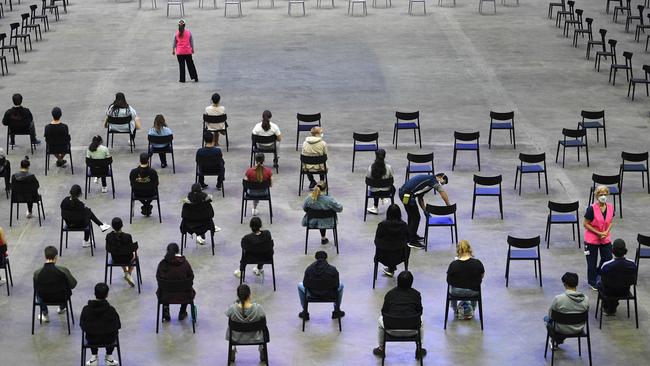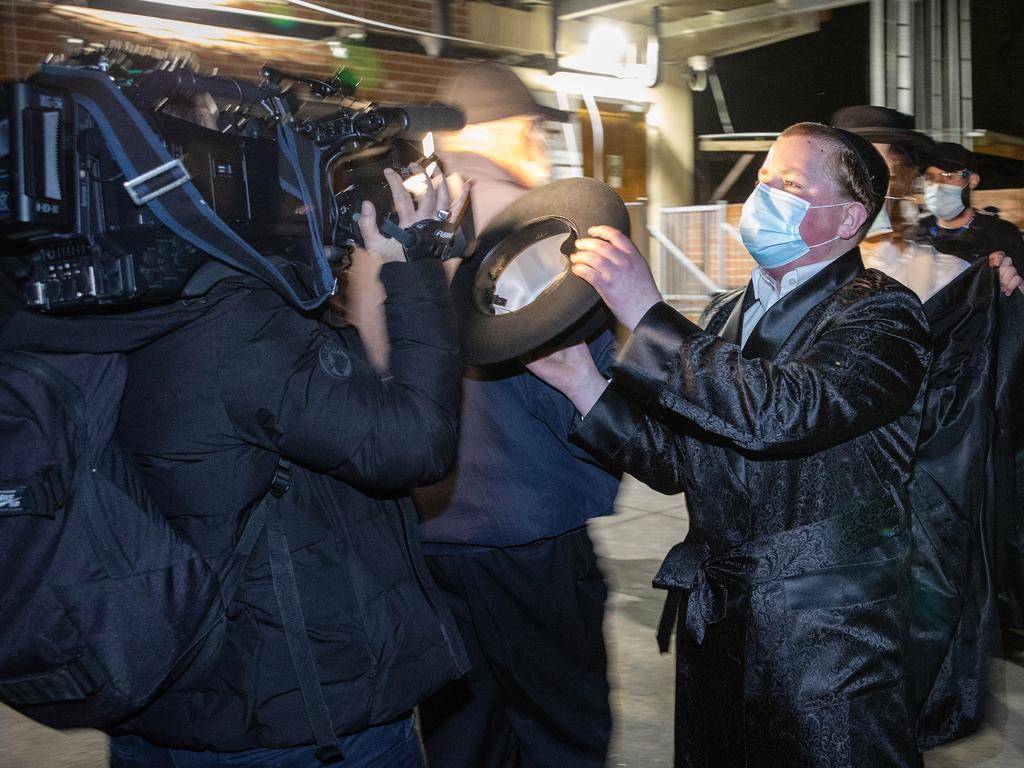Coronavirus: Kids catch Covid but most don’t get sick, research shows
Delta data reveals that 98 per cent of infected children and teenagers were asymptomatic or showed only mild symptoms.

An overwhelming majority of children and teenagers who have contracted the coronavirus during NSW’s latest outbreak have avoided serious illness, according to a new report that pushes a case for the reopening of schools.
Analysis of Covid-19 cases by the National Centre for Immunisation Research and Surveillance has found that 98 per cent of 2864 young people to test positive between mid-June and the end of July were asymptomatic or reported only mild symptoms. That was despite the Delta variant proving five times more transmissible across education settings and households than the virus at the centre of the 2020 outbreak.
At the launch of the NCIRS report on Wednesday, centre director Kristine Macartney stressed that those most at risk of infection, and of transmitting the virus were unvaccinated adults rather than children. “We’re very lucky to know – and it’s consistent with data over the course of the pandemic – that Covid-19 remains generally mild in children; only around 2 per cent will require hospitalisation,” she said.
“And for many … it’s actually for monitoring and social care. Very few children are admitted to intensive care.”
The report, which comes as NSW is planning for a staggered reopening of classrooms from next month, says 51 schools and early childhood centres had a case of Covid-19 between June 16 and July 31, with subsequent spread of the virus occurring in 19 of those.
Insight is also provided into where transmission was most likely to occur and between whom.
Across all education settings, the virus attack rate – which is a measure of the frequency of new cases of Covid-19 among contacts of primary cases – was 4.7 per cent.
However, the adult-to-adult attack rate was 11.2 per cent, compared with child-to-adult and child-to-child attack rates of 1.5 per cent and 1.6 per cent.
Transmission was low in schools at 1.2 per cent, largely a result of the school holiday period and subsequent limited attendance during term three, when most Greater Sydney school students engaged in remote learning.
However, schools have permitted children of essential workers and those who cannot learn from home to attend.
In preschool and childcare centres, which have remained open, transmission was significantly higher at 6.4 per cent, with staff-to-staff transmission higher still at 17 per cent.
The data confirms that the household remains the most risky site for transmission.
For the 106 secondary cases where infection was acquired within the school or childcare service, 181 of 256 household contacts across 96 households were subsequently infected with Covid-19, which translates to an attack rate of 70.7 per cent.
University of Melbourne paediatric infectious diseases epidemiologist Fiona Russell said the NSW data was consistent with findings from overseas and bolstered the case for getting young people back to school while also making sure schools and early childcare centres were supported to maximise measures to reduce transmission.
“The NSW data confirms that for the majority of children, Covid is a mild disease, and it is uncommon for children to end up in hospital,” Professor Russell said.
“Household transmission is really common. Until a vaccine is available for all children, it is really important that all eligible household members get vaccinated to protect themselves.”
University of Sydney paediatric infectious disease specialist Archana Koirala, who led the study, said full participation in education was essential for children to learn and develop socially and for family and societal functioning.
"These results should give confidence to families, schools and the community that we have robust evidence on how the Delta variant behaves in children and educational settings,” Dr Koirala said.
“This evidence is being used to design strategies for returning to face-to-face learning safely as we learn to live with Covid-19.”
NSW plans to start reopening schools from October 25, with kindergarten and year 1 students returning first followed by other year levels from the first week of November. Masks will be mandatory for secondary students and recommended for primary students, while teachers and school staff have until November 8 to become fully vaccinated.
As of August 26, 67 per cent of teachers had been vaccinated, with 39 per cent having received two doses.
Australian Education Union president Correna Haythorpe said the NCIRS report provided more evidence in support of a nationally led plan to prioritise the vaccination of education workers “as a matter of urgency”.







To join the conversation, please log in. Don't have an account? Register
Join the conversation, you are commenting as Logout